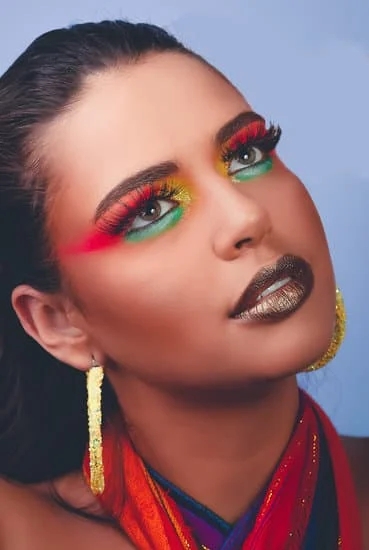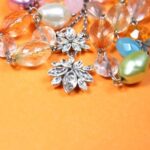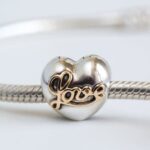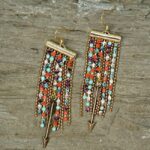When it comes to purchasing diamonds, one common concern that many people have is whether jewelry stores engage in the practice of swapping diamonds. This worry stems from stories and rumors circulating about individuals who claim to have received a diamond of lower quality or value than what they originally purchased. In this article, we will delve into this phenomenon to explore how prevalent it is and provide valuable information on how consumers can protect themselves against such scams.
Diamond swapping scams occur when jewelry stores deceitfully replace a genuine diamond with a lesser-quality or less-valuable stone without the customer’s knowledge. This fraudulent activity preys on unsuspecting buyers who may lack knowledge about diamonds or be unable to differentiate between genuine and fake stones. Therefore, it’s essential for consumers to understand how these scams work, the signs to watch out for when purchasing diamonds, and the importance of conducting thorough research before making a purchase.
It is crucial for buyers to be equipped with expert tips on identifying authentic diamonds and protecting themselves from falling victim to swap scams. Additionally, finding reputable jewelry stores that follow transparent business models becomes imperative.
As we further examine legal protections and consumer rights related to diamond purchases, we’ll also analyze real-life case studies of individuals who have experienced diamond swapping firsthand. Lastly, steps to take if one suspects being a victim of diamond swapping will be discussed, culminating in strategies for safeguarding your diamond purchases and making informed decisions.
How Does the Diamond Swapping Scam Work?
Diamond swapping is a deceitful practice that some unscrupulous jewelry stores may engage in to increase their profits at the expense of unsuspecting customers. The scam involves replacing a genuine diamond with a lower quality or imitation stone without the customer’s knowledge or consent. Understanding how this scam works can help consumers protect themselves from falling victim to it.
The diamond swapping scam typically occurs during the appraisal or repair process. When a customer brings their diamond jewelry to a store for appraisal or repair, they trust that the jeweler will handle their precious stones with care and integrity. However, some untrustworthy jewelers may take advantage of this trust by swapping the genuine diamond with a similar-looking but lower quality stone.
There are several methods that jewelers may employ to carry out the scam. One common technique is known as “switching and baiting.”
In this scenario, when a customer brings their diamond jewelry for repair or appraisal, the employee swaps their genuine diamond with a fake one while distracting them or working behind closed doors where they cannot closely observe what is happening. Another method involves misrepresenting a diamond’s characteristics on its certificate or providing false reports in order to deceive customers about its true quality and value.
By understanding the techniques used in the diamond swapping scam, consumers can be more vigilant and take necessary precautions when dealing with jewelry stores. It’s crucial to be aware of these tactics so that you can identify any suspicious behavior while your diamonds are being appraised or repaired.
Stay tuned for our next section on “Signs to Watch Out for When Purchasing Diamonds from Jewelry Stores” to learn how you can protect yourself from falling victim to this deceitful practice.
Signs to Watch Out for When Purchasing Diamonds from Jewelry Stores
When purchasing diamonds from jewelry stores, it is important to be aware of the signs that may indicate potential diamond swapping. This scam occurs when a jeweler replaces a genuine diamond with a lower-quality or imitation stone without the customer’s knowledge or consent. By being vigilant and knowing what to look for, you can protect yourself and ensure that you are purchasing an authentic diamond.
Here are some signs to watch out for when purchasing diamonds from jewelry stores:
- Unusually Low Prices: If a jeweler is offering diamonds at significantly lower prices compared to other reputable retailers, it could be a red flag. Genuine diamonds have a certain value based on their cut, clarity, color, and carat weight. If the price seems too good to be true, it might indicate that there is something suspicious about the diamond’s authenticity.
- Lack of Certification: Authentic diamonds are typically accompanied by grading reports from independent gemological laboratories such as GIA (Gemological Institute of America) or AGS (American Gem Society). These certifications provide an unbiased evaluation of the diamond’s quality characteristics. If a jeweler is unable or unwilling to provide such certification, it raises concerns about the legitimacy of the stone.
- Switching Stones: During the purchasing process, pay close attention to the diamond itself. Keep track of any identifying marks or inclusions unique to your stone before leaving it with the jeweler for any repairs or modifications. When you receive your diamond back, examine it carefully under magnification and compare its characteristics with those you noted earlier. Any noticeable changes in appearance or discrepancies should raise suspicions and prompt further investigation.
In addition to these warning signs, trust your gut instinct and always do your due diligence before making any significant purchases. Research reputable jewelers with positive reviews and transparent business practices. Seek recommendations from trusted friends or family members who have had successful experiences buying diamonds from specific stores.
The Importance of Research and Due Diligence before Buying Diamonds
When it comes to purchasing diamonds, conducting thorough research and exercising due diligence is crucial. This section will explore the importance of taking these steps before making a diamond purchase.
- Researching Diamond Characteristics: Before buying a diamond, it is essential to educate yourself on the various characteristics that contribute to its value and quality. One key aspect to consider is the 4Cs – cut, color, clarity, and carat weight. Understanding these factors will enable you to make informed decisions based on your preferences and budget. Additionally, researching different diamond shapes, certifications (such as GIA or AGS), and types of settings can help you narrow down your options.
- Comparing Prices: Once you have an understanding of the diamond characteristics you desire, it is important to compare prices from different jewelry stores. Pricing can vary significantly based on factors such as store location, brand reputation, and overhead costs. By comparing prices across multiple retailers, both online and offline, you can ensure that you are not overpaying for a diamond.
- Verifying the Jewelry Store’s Reputation: Before purchasing diamonds from any jewelry store, it is crucial to verify their reputation and credibility in the industry. Look for well-established retailers with a transparent business model and positive customer reviews. Check if they are members of reputable jewelry associations or have received any certifications or accolades in recognition of their ethical practices.
Expert Tips for Identifying Authentic Diamonds and Protecting Yourself
When purchasing diamonds, it is crucial to be able to identify authentic stones and protect yourself from falling victim to diamond swapping scams. Here are some expert tips on how to do just that:
Understand the 4C’s
One of the first things experts recommend when it comes to identifying real diamonds is understanding the 4C’s – cut, carat weight, color, and clarity. These factors determine a diamond’s quality and value. Familiarize yourself with industry standards for each C so that you can gauge whether a stone matches its stated characteristics.
Always Request Certification
A reputable jeweler will always provide certification for their diamonds. When purchasing a diamond, ask for an independent gemological certificate from a credible grading laboratory such as the Gemological Institute of America (GIA). This document will confirm the authenticity of the stone and provide detailed information about its characteristics.
Use a Loupe or Magnifying Glass
Examining the diamond under magnification can reveal important clues about its authenticity. Ask the jeweler if you can inspect the diamond using a loupe or magnifying glass. Look for small imperfections within the stone, called inclusions, as these can help confirm its natural origin.
Check for Hallmarks
Most genuine diamonds have certain hallmarks that indicate their authenticity and quality. Look for stamps such as “750” or “18K” on gold settings, indicating 18-karat gold, and marks like “PT” or “950” on platinum settings, showing 950 parts per thousand pure platinum.
Trust Your Instincts
Intuition plays a role in identifying fake diamonds as well. If something seems too good to be true or if you feel uneasy about a purchase, listen to your gut instinct. Reputable jewelers are transparent, knowledgeable, and willing to provide information and answer questions.
By following these expert tips, you can become more knowledgeable about diamonds and better equipped to identify authentic stones. Remember, the key is to always do thorough research and due diligence before making any diamond purchases.
Trusted Jewelry Stores
Researching Jewelry Stores
When it comes to purchasing diamonds, it is crucial to find a reputable jewelry store with a transparent business model. With the rise of online shopping, there are numerous options available, but it also means that there are more opportunities for fraud and diamond swapping scams. Therefore, conducting thorough research before making a purchase is essential.
One way to start your research is by checking customer reviews and testimonials. Websites like Yelp or Google Reviews provide platforms where customers can share their experiences with particular jewelry stores. Reading these reviews can give you insight into the store’s reputation and whether or not they have been involved in any fraudulent activities.
Another important aspect to consider when researching jewelry stores is their certifications and affiliations. Reputable stores will often have certifications from well-known diamond grading laboratories such as GIA (Gemological Institute of America) or AGS (American Gem Society). These certifications ensure that the diamonds you are purchasing have been accurately graded and evaluated for quality.
Transparent Business Practices
A key indicator of a trusted jewelry store is their commitment to transparent business practices. This includes providing clear information about their sourcing processes, ethical standards, and policies on diamond exchanges and returns.
Reputable retailers will often offer detailed documentation for each diamond purchase, which should include a certificate from an independent grading laboratory. This certificate should outline the specific details of the diamond’s characteristics, including its color, clarity, cut, and carat weight.
Additionally, transparent jewelers will be open about their pricing policies. They should provide you with accurate pricing information upfront without any hidden fees or sudden price increases after the sale has been made.
Verifying Authenticity
To ensure that you are buying an authentic diamond from a trusted retailer, it is important to verify certain aspects of the stone. One effective method is by requesting a professional appraisal before making a purchase. This appraisal should be conducted by a qualified gemologist who can verify the diamond’s authenticity and provide an unbiased evaluation of its quality.
Furthermore, you can also request to see the diamond under a jeweler’s loupe or microscope. Authentic diamonds will display specific characteristics such as natural inclusions, which can be observed under magnification. A reputable jeweler would not hesitate to show you these features as it demonstrates their commitment to transparency and ensures that you are making an informed decision.
By following these steps and conducting thorough research, you can find trusted jewelry stores with transparent business models. These retailers prioritize customer satisfaction and ensure that their customers are equipped with the necessary information to make informed decisions when purchasing diamonds.
Legal Protections and Consumer Rights for Diamond Purchases
When purchasing diamonds, it is important to be aware of the legal protections and consumer rights that are in place to safeguard your investment. Diamond purchases can involve significant amounts of money, and if you suspect that you have been a victim of diamond swapping or any other fraudulent activity, it is crucial to understand what actions you can take to protect yourself.
One key legal protection for diamond purchases is the Federal Trade Commission’s (FTC) Jewelry Guides. These guides provide businesses with clear guidelines on how to describe and sell their jewelry products, including diamonds. The FTC requires that jewelers accurately represent the characteristics of the diamonds they sell, such as the cut, color, clarity, and carat weight. This means that jewelers must disclose any treatments or enhancements made to the diamonds as well.
Furthermore, consumers have the right to ask for written disclosure about a diamond’s characteristics before making a purchase. This can help ensure that you are getting exactly what you are paying for and allow you to compare different offerings from various jewelers. It is also advisable to ask for a grading report from an independent gemological laboratory like the Gemological Institute of America (GIA) or the American Gem Society Laboratories (AGSL).
In addition to these legal protections, consumers also have certain rights when purchasing diamonds from jewelry stores. These rights include receiving accurate information about the diamond’s attributes and understanding its value relative to its price.
If you believe that a jeweler has misled or deceived you in any way, it is essential to document all relevant information, such as receipts, invoices, and any communication with the jeweler. This documentation will be valuable if you need to take legal action or file a complaint with consumer protection agencies.
Ensuring that you are aware of your legal protections and consumer rights when buying diamonds can help prevent diamond swapping scams and other fraudulent activities. By staying informed and taking necessary precautions, you can make more informed decisions and protect yourself from falling victim to unscrupulous practices in the diamond industry.
Case Studies
In order to further illustrate the issue of diamond swapping, it is important to examine real-life examples where individuals have fallen victim to this scam. These case studies serve as cautionary tales and highlight the need for consumers to be vigilant when purchasing diamonds from jewelry stores.
One such case involved a couple who purchased what they believed to be a high-quality diamond engagement ring from a well-known jewelry store. However, after they had the ring independently appraised, they discovered that the diamond was significantly lower in quality and value than what they had been led to believe. Upon further investigation, it was revealed that the store had swapped their original diamond with a lower-grade stone without their knowledge.
Another notable case involved a woman who purchased a diamond necklace from a trusted jewelry retailer. The necklace came with certification papers stating that the diamond was of top quality. However, several months later, she noticed significant flaws in the stone and decided to have it appraised again.
To her shock, she discovered that not only was the diamond of poor quality, but it was also a different stone altogether. It became evident that the original diamond had been replaced with a lesser-quality one by the jewelry store.
These cases highlight how unsuspecting customers can fall victim to diamond swapping scams, even when dealing with reputable retailers. It serves as a reminder to exercise caution and take necessary precautions when making such valuable purchases.
| Case | Description | Outcome |
|---|---|---|
| Engagement Ring Swap | A couple purchased an engagement ring from a well-known jewelry store. | Discovered that the diamond was of lower quality and value. |
| Necklace Swap | A woman bought a diamond necklace from a trusted jewelry retailer. | Realized that the diamond had been replaced with a lesser-quality stone. |
These examples shed light on the need for consumers to be diligent in their research, due diligence, and scrutiny of the diamonds they are purchasing. By learning from these real-life experiences, individuals can better protect themselves from falling victim to diamond swapping scams.
Steps to Take if You Suspect You’ve Been a Victim of Diamond Swapping
If you suspect that you have fallen victim to diamond swapping at a jewelry store, it is important to take immediate action. Here are the steps you should take if you suspect that the diamond you purchased has been swapped:
- Verify the Diamond: The first step is to verify whether the diamond you received is actually the same as the one you initially purchased. Take your diamond to a trusted independent appraiser or gemologist who can assess its authenticity and quality. They will be able to compare the stone’s unique characteristics, such as its color, clarity, and cut, with the documentation provided by the jeweler.
- Collect Evidence: If it is determined that the diamond has indeed been swapped, gather as much evidence as possible. Take detailed photographs of both the original and swapped diamonds, highlighting any distinguishing features or flaws. Keep all receipts, certificates, and any correspondence with the jewelry store in a safe place. These will be crucial for establishing your case later on.
- Contact the Jewelry Store: Bring your concerns directly to the attention of the jewelry store where you made the purchase. Explain your suspicions and provide them with your evidence. Be firm but polite in asserting your rights as a consumer and make it clear that you expect a resolution to their mistake.
- Escalate Your Complaint: If you do not receive a satisfactory response from the jewelry store, escalate your complaint through other channels. Consider filing a complaint with your local consumer protection agency or contacting relevant professional organizations such as Jewelers of America or Better Business Bureau.
- Seek Legal Advice: Depending on the severity of your case and potential losses involved, seeking legal advice may be necessary. Consult with an attorney who specializes in consumer protection law to understand what legal options are available to you.
Remember that prevention is always better than cure when it comes to diamond swapping scams, so ensure that you research and choose reputable jewelers before making any purchases. However, if you have already been victimized, taking these steps promptly and meticulously will greatly increase your chances of resolving the situation and obtaining justice.
Please note: The information provided here is for general guidance purposes only and should not be construed as legal advice. Consult with a professional for specific advice regarding your situation.
Conclusion
In conclusion, it is crucial to take necessary precautions when purchasing diamonds from jewelry stores in order to safeguard your purchases and make informed decisions. The diamond swapping scam is a real concern, and understanding how it works can help you avoid falling victim to it. By being aware of the signs to watch out for, conducting thorough research, and following expert tips for identifying authentic diamonds, you can protect yourself from fraudulent practices.
One of the most important steps you can take is to find reputable retailers with a transparent business model. Trusted jewelry stores with a long-standing reputation for quality and customer satisfaction are more likely to have strict protocols in place to prevent diamond swapping scams. Reading reviews, seeking recommendations from trusted sources, and asking questions about their sourcing and quality control processes can help you determine if a retailer is trustworthy.
It is also essential to know your legal protections and consumer rights when purchasing diamonds. Familiarize yourself with the laws governing diamond sales in your country or region, including any regulations related to certification and grading. Knowing what rights you have as a consumer can give you peace of mind that you are making an informed decision and will have recourse if any issues arise with your purchase.
If you do suspect that you have been a victim of diamond swapping, there are steps you can take. Document any discrepancies or concerns immediately and contact the retailer or jeweler where you made the purchase. If they are unresponsive or unwilling to address your concerns satisfactorily, consider reporting them to consumer protection agencies or seeking legal assistance. Taking action promptly will maximize your chances of resolving the issue.
By following these guidelines and taking proactive measures before and after purchasing diamonds from jewelry stores, you can minimize the risk of falling prey to diamond swapping scams. Safeguarding your diamond purchases starts with being informed and vigilant throughout every step of the buying process. With diligence and attention to detail, you can enjoy the beauty of genuine diamonds while protecting yourself from fraudulent practices in the industry.
Frequently Asked Questions
Can you transfer diamonds from one ring to another?
Yes, it is possible to transfer diamonds from one ring to another. This process is known as diamond swapping or diamond transfer. Skilled jewelers can carefully remove a diamond from its setting in one ring and securely set it in another ring of your choice.
The success of this transfer depends on various factors such as the size, shape, and compatibility of the diamonds with the new setting. It is essential to consult with a professional jeweler who can assess the feasibility of transferring diamonds based on your specific requirements.
How long does it take to switch a diamond?
The time taken to switch a diamond can vary depending on multiple factors. Generally, it involves removing the diamond from its original setting, checking its condition, ensuring it fits securely in the new setting, and then professionally setting it in place. The complexity of these steps depends on the design and intricacy of both rings involved.
For simple transfers without any additional modifications or repairs, it may take only a few hours or less by an experienced jeweler. However, more complicated transfers that require resizing or altering settings may take longer, potentially ranging from a few days to a couple of weeks.
Can I exchange a diamond?
Whether you can exchange a diamond depends on the specific circumstances and policies in place where you purchased it. Many reputable jewelry stores offer exchange options within certain time frames under specific conditions. Typically, these policies are more common for newly purchased diamonds rather than those worn over an extended period of time due to wear and tear considerations.
Some jewelers may allow you to exchange your diamond for another one with equal or higher value or offer store credit towards another purchase. It is crucial to review the terms and conditions provided by the jeweler at the time of purchase or contact them directly for information on their specific exchange policy.

Welcome to my jewelry blog! My name is Sarah and I am the owner of this blog.
I love making jewelry and sharing my creations with others.
So whether you’re someone who loves wearing jewelry yourself or simply enjoys learning about it, be sure to check out my blog for insightful posts on everything related to this exciting topic!





